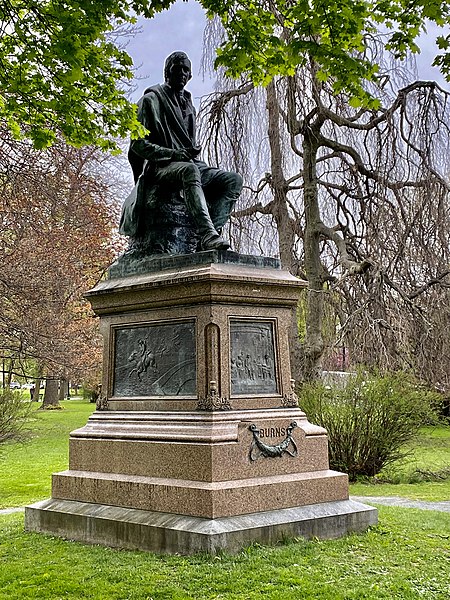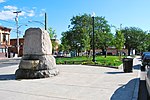Statue of Robert Burns (Albany, New York)
1888 establishments in New York (state)1888 sculpturesBronze sculptures in New York (state)Buildings and structures in Albany, New YorkCultural depictions of Robert Burns ... and 7 more
Monuments and memorials in New York (state)Outdoor sculptures in New York (state)Statues in New York (state)Statues of writersTourist attractions in Albany, New YorkUse American English from May 2021Use mdy dates from June 2021

A statue of Robert Burns stands in Washington Park in Albany, New York, United States. The statue was designed by Charles Calverley and was unveiled in 1888. Four bas-reliefs around its pedestal, in part designed by George Henry Boughton, were later added in 1891. The statue is one of the oldest pieces of public art in the park.
Excerpt from the Wikipedia article Statue of Robert Burns (Albany, New York) (License: CC BY-SA 3.0, Authors, Images).Statue of Robert Burns (Albany, New York)
Washington Park Road, City of Albany
Geographical coordinates (GPS) Address Nearby Places Show on map
Geographical coordinates (GPS)
| Latitude | Longitude |
|---|---|
| N 42.655077 ° | E -73.767975 ° |
Address
Robert Burns Statue
Washington Park Road
12210 City of Albany
New York, United States
Open on Google Maps










